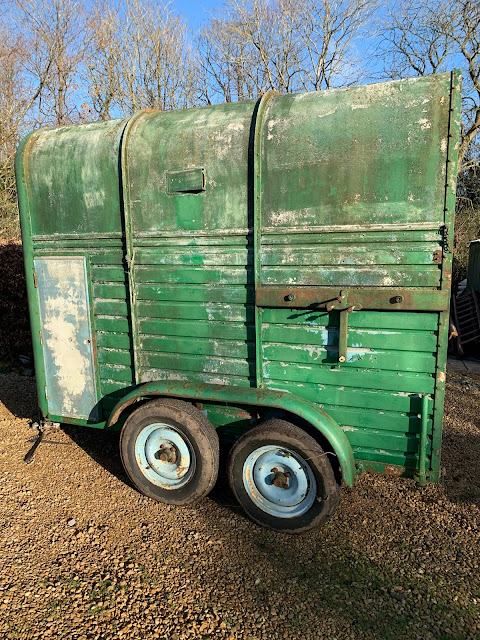Winter Aconites are one of the most overlooked of late winter, early spring flowers. They're a bit like winter buttercups (but no where near as weedy thank goodness) but each flower has a little collar of green leaves around it rather like an Elizabethan ruff, very pretty. I had a little patch of them in this garden when we came here ten years ago, and I have tried to increase them sporadically each year without notable success. This is all the more irritating since they are a native species, and not far away from here, there is a little copse which is carpeted with them, just growing in the wild, forming a huge yellow carpet under the trees. I make a special point of going to see them each year, though you do have to choose your day - they are at their best when the sun is out, and tend to close up a bit on the duller days.
However, I'm pleased to see that this year they have increased quite a bit
and are a substantial improvement on previous years. I acheived this by the simple expedient of watching out for when the little flowers faded and formed seed pods, and just picked off the pods and spread the seed around in patches of available ground nearby. This is of course what would have happened in nature anyway without my intervention, but I think a little judicious help has made a difference. Spreading the seed and covering with a little earth or compost helps avoid it becoming food for wildlife and gives the seeds a better chance of survival and germination. The seed germinates best when sown fresh, so this dispersal method works quite well, though I expect sowing into pots would work as well and give greater control over the results. You can also divide up the clumps after flowering "in the green" in the same way as snowdrops.
Although known by the common name Winter Aconite, it's proper name is Eranthis Hyemalis, a relative of the buttercup, and so it's not a true aconite like the famously poisonous border perennial Monkshood, of the Aconitum family proper, - it is however just as poisonous (should you be thinking of have a plateful for dinner!)





I was given this plant several years ago from a patient in the office where I was working but SHE had no idea what it was called. It was such a lovely little bright spot in my spring garden! But I had to leave it behind when I moved. I really wanted to find it again, but not knowing its name kept me from that--Now that I know, i can look for it--THANKS!! :-)
ReplyDeleteThat's great Kim, hope it does well for you. Thanks for commenting. Kathy
ReplyDelete